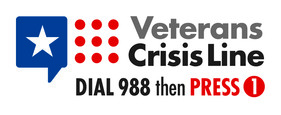
Fitness trainer and Hollywood Post 43 Commander Jennifer Campbell
We all know fitness is an important piece of a healthy lifestyle, but are we taking the steps to improve our health? Overweight and obesity increasingly contribute to disease burden among military populations. In fact, studies found that overweight (body mass index > or = 25 kg/m2) prevalence in veterans was 73.3% for males and 53.6% for females. Obesity (body mass index > or = 30 kg/m2) prevalence in veterans was 25.3% for males and 21.2% for females. While these are startling statistics, there are several ways to take charge of your weight and health today. Getting started can be confusing and overwhelming, but I have some advice on how to start a workout plan, whether you’ve fallen off the wagon because of COVID or if this is a new journey for you.
The first step is to take some baseline measurements and assessments. It’s an import tool in understanding limitations and tracking progress. It will be helpful to retest every 4 to 8 weeks.
- Take your pulse rate before and immediately after walking 1 mile.
- Measure how long it takes to walk 1 mile, or how long it takes to run 1.5 miles.
- How many standard or modified push ups can you do at a time?
- Hamstring flexibility – how far you can reach forward while seated on the floor with your legs in front of you.
- Measure your waist circumference.
- Record your body mass index. BMI = weight (lb) / [height (in)]2 x 703.
When building a fitness plan, first consider your fitness goals. Are you starting a fitness program to lose weight or are there other motivations, such as preparing for a race or the National Commander’s upcoming 100 Miles for Hope challenge? Having specific goals can help you tailor your plan.
Trainer Tip: Put your plan and progress on paper. Seeing progress can reinforce your goals, encouraging you to stay on track.
Creating a balanced routine also means staying consistent. For most healthy adults, the Department of Health and Human Services recommends getting at least 150 minutes of moderate aerobic activity or 75 minutes of vigorous aerobic activity a week, or a combination of the two. Guidelines suggest that spreading out the exercise lead over the course of a week and of course, more exercise provides even greater health benefits. Don’t worry if you can’t meet the suggested guidelines, even small amounts of physical activity are helpful. Being active for short periods of time throughout the day can add up to provide health benefits and you should work toward goals that are appropriate for your current fitness level.
Trainer Tip: I tell my clients to try to get an hour of brisk walking in per day. If you can’t do a full hour, aim for two 30 minute sessions throughout the day. If 30 minutes isn’t feasible, break it up into four 15 minutes sessions.
Get a broad range of exercise in your fitness program.
Strength Training: Adding strength or resistance training to your routine will help build muscle, which in turn, helps burn fat. Weight-bearing exercises force you to work against gravity, increasing bone density and reducing the risk of osteoporosis.
Cardio: Steady state cardio (ie: walking, jogging, biking, swimming) where you maintain a steady heart rate range is a staple in cardiovascular health and also targets a heart rate to put you in a fat burning zone.
HIIT: In high-interval intensity training, you perform short bursts of high-intensity activity separated by recovery periods of low-intensity activity. Make sure you are choosing a heart rate range that is appropriate for your physical condition.
Trainer Tip: Start conservatively and progress slowly. If exercise is new to you or you’ve taken a long hiatus, start cautiously and progress slowly. If you have an injury or a medical condition, consult your doctor or an exercise therapist for help designing a fitness program that gradually improves your mobility, strength and endurance.
Allow time for recovery. Good intentions can often be the downfall of fitness progress. Working out too long or too intensely — and give up when their muscles and joints become sore or injured. Plan time between sessions for your body to rest and recover. Rest days, stretching, warm ups, and cool downs are all essential parts of recovery.
Build activity into your daily routine. Finding time to exercise can be a challenge. To make it easier, schedule time to exercise as you would any other appointment. Plan to watch your favorite show while walking on the treadmill, read while riding a stationary bike, or take a break to go on a walk at work. Activity doesn’t always have to mean structured exercise. Mowing the lawn, gardening, housework, and shopping are all examples of activities of daily living that establish a large portion of calories burned daily. These are called non-exercise activity thermogenesis, or NEAT, which accounts for the energy that you expend when you are not sleeping, eating, or doing structured physical activities like exercise or sports. “NEAT” calories add up fast – aim to increase your overall activity and you should see an increase in overall caloric expenditure.











